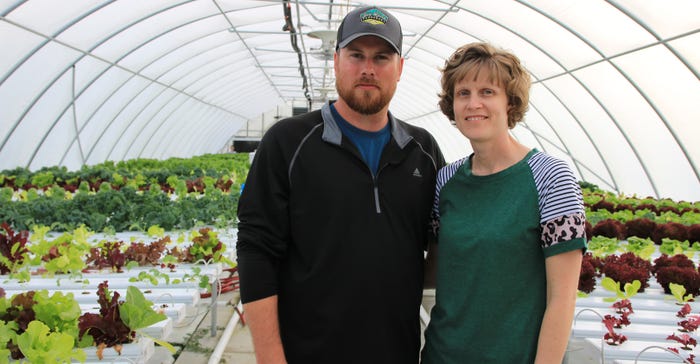
The coronavirus shutdown has had a dual effect on vegetable and specialty crop growers in Illinois: Online and customer-direct demand is soaring, while restaurant and cafeteria demand has been crushed.
Dave Bishop, the now retired head farmer of PrairiErth Farm in Atlanta, Ill., says Community Supported Agriculture (CSA), sales have doubled since pre-pandemic levels. This more than covers his farm’s losses from the relatively few restaurants it serves.
“The guys who are in a world of hurt are the ones that had restaurants as their basic market, and of course, that suddenly stopped. Everyone had to scramble,” Bishop says.
Related: Complete coronavirus coverage
“Total volume is way up with grocery stores, consumer-direct CSAs and farmers markets, but of course, restaurants are in a world of hurt. I don’t know what’s going to happen to them. It’s a little scary, but for us on the farm, right now, it’s all good news,” Bishop adds.
Greenhouse growers Andrew and Heather Spray, who operate Joy Lane Produce in West Salem, Ill., have stepped up customer-direct marketing to find their lettuce and other mixed greens a home after restaurants in Illinois were ordered to close on March 16 by Gov. J.B. Pritzker’s administration. Prior to COVID-19, 85% to 90% of Joy Lane’s sales went to restaurants.
“Some restaurants just ended up shutting down, because curbside wasn’t working out for them,” Heather says. “Others are still taking deliveries, maybe every other week instead of every week. They’re trying to adapt.
“Unfortunately, when people do takeout, they don’t do a lot of salads. Within about a week, we realized we were going to have to shift our strategy.” She says restaurants that package lettuce as an included side are still suffering from reduced demand.
Produce sales solutions
While they had excess lettuce, Heather says their local food bank didn’t have the storage space to accept all the greens they grow. Rather than mulch what would have gone unused, the Sprays stepped up marketing to deliver to homes in nearby Mount Carmel, Ill.
They also have a shed outside their house, where customers deposit money and take a packaged head of lettuce from the fridge. And they began selling in parking lots around their area, taking preorders online and sometimes working with restaurants that remain open.
In anticipation of their normal seasonal demand, Andrew says if anything, he’s stepped up the number of seeds he’s started compared to where he was this time last year. Despite COVID-19, he’s betting the surge in demand from produce stands, farmers markets and CSAs will continue into the summer when the greenhouse’s leafy greens are ready for harvest. Depending on sunlight, that season can span anywhere from five to nine weeks in the summertime for the Sprays, who use a hydroponic system and do not rely on artificial light.
“Our seasonal markets are booming. But everybody’s different,” Andrew says, concluding that while restaurants provided consistent demand for his produce operation, direct-to-consumer marketing is spottier.
Click through the slideshow to see photos of the Joy Lane Produce operation.
Read more about:
Covid 19About the Author(s)
You May Also Like




